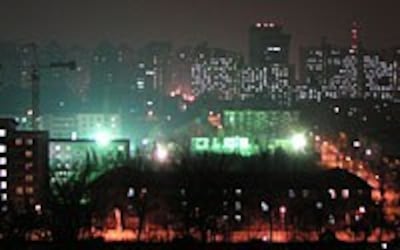
WASHINGTON—China has issued a new guidelines urging power plants to cut air pollution, but experts say rising consumption is hindering the government’s efforts to reduce coal emissions.
On May 18, the State Development and Reform Commission (SDRC) issued what it called a “detailed mandate,” suggesting ways for coal-fired power plants to remove sulphur emissions from the air.
Guidelines unlikely to be enforced
Experts interviewed by Radio Free Asia said the guidelines were no more than that, and lacked teeth.
“To me, it sounds as though Beijing is simply grasping at any straw to try to get some improvement in their air quality and their acid rain problem,” Elizabeth Economy, director of Asia studies at the Council on Foreign Relations in New York, told RFA.
"There's nothing in this advisory...that provides any real incentives for actors to change their behavior, either power plants or local enforcement officials, to take stronger action," said Economy, author of a book on China's environmental problems, The River Runs Black.
The toxic gas sulphur dioxide is a major contributor to acid rain that damages crops, pollutes waterways and makes people ill. Sulphur is also an ingredient in the coal that China uses to generate more than 75 percent of its electric power, according U.S. Department of Energy data.
China’s State Environmental Protection Administration (SEPA) estimates that the damage from sulphur dioxide and acid rain costs the country 110 billion yuan (U.S.$13.3 billion) per year, official media say.
Biggest summer power shortfall yet
China’s State Grid Corp. raised its estimate last week of the power shortfall for the coming summer to more than 30 million kilowatts, far larger than in recent years. Elizabeth Economy said the government may not take the risk of closing even the dirtiest power plants while the shortage continues.
“Unless there’s substantially more behind this than what we’ve seen, I really don’t think we’re going to see any difference emerge in terms of practice on the ground,” Economy said.
“As long as China’s economy continues to grow at this breakneck pace and the government continues to confront the prospect of rolling energy shortages especially in the coastal areas, I think that they are going to continue to allow small coal mines to operate and small coal-fired power plants to continue on line, even those that they had previously shut down,” Economy told RFA reporter Michael Lelyveld.
Christopher Flavin, president of the Worldwatch Institute, a Washington-based research organization, said that SEPA officials took environmental regulation seriously, but collisions of interests have made their task difficult to carry out.
“I think the national government is actually trying pretty hard. In many cases, they’re being frustrated by local officials, lack of local enforcement, in some cases probably failures at the national level, as well,” Flavin told RFA.
Poisoned people, premature deaths
In May, the Worldwatch Institute released its annual “Vital Signs” report on global economic, social and environmental trends. This year, the report focuses on China because its surge in demand and production has been driving much of the world’s growth in consumption of natural resources.
“But I know some of the top officials in the State Environmental Protection Administration in Beijing themselves are quite critical of the government’s inability to fully enforce the regulations they have in place,” he said.
Among the many facts highlighting the new role of China, the report says the country now accounts for 27 percent of the world’s steel output, consuming huge amounts of coal and power.
The report also cited a World Bank study showing that more than 80 percent of the Chinese cities surveyed had sulphur dioxide or nitrogen oxide levels above maximum guideline levels set by the World Health Organization.
Nearly half the cities with excessive sulphur emissions registered at more than double the standard, Worldwatch said.
According to World Bank estimates cited by the report, some 590,000 people a year will suffer premature deaths due to urban air pollution in China between 2001 and 2020.
Christopher Flavin was asked how China’s government is balancing the demands for more coal-fired power plants with environmental risks.
“I think it gets played out in a very complex and sometimes messy fashion, and clearly, China has a long way to go in terms of living up to even the environmental standards it sets for itself,” Flavin said.
Original reporting by Michael Lelyveld. RFA Mandarin service director: Jennifer Chou. Produced for the Web in English by Luisetta Mudie.
